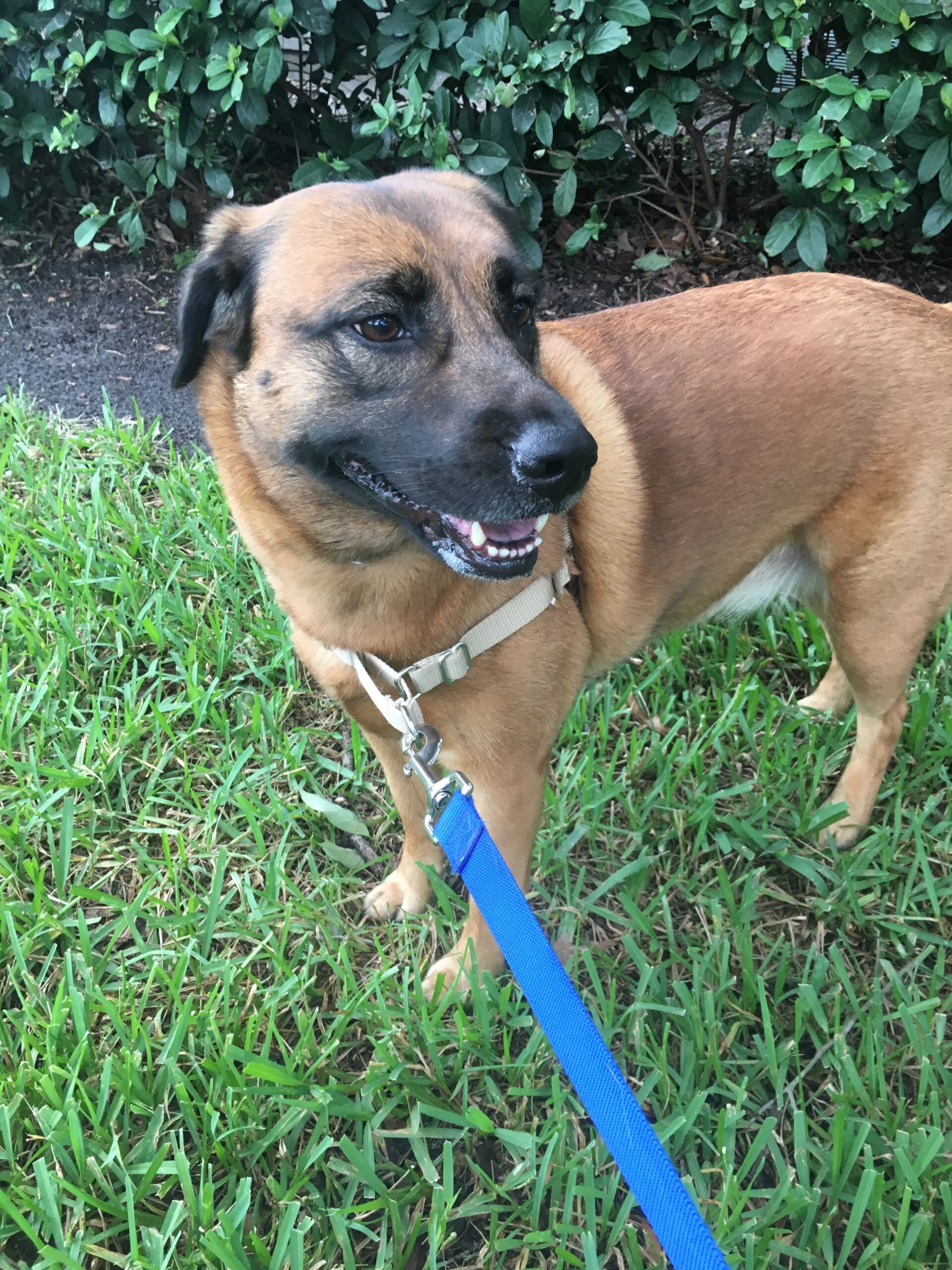Barks Blog
Portland Blog Competition: Changing a Dog’s View of the World
By Kathleen Godfrey

As a trainer, my goal is to help to help both dogs and their guardians have the best possible life together. New client Angie heard about me through a friend I’d helped the friend work with a rather “wild” foster dog (he was truly a good dog, he just had no idea what behavior was expected of him and so we had to teach him). The dog did a 180 degree turn and is now happy with his forever family. But back to Angie and her dog, Babs. Angie had rescued Babs a few months earlier and was struggling with her reactivity on leash. She would bark and lunge at people, and especially other dogs.
During our phone consultation the stress and sadness in Angie’s voice was palpable. She loved this dog and just wanted to be able to go for walks with her in peace.
Before Babs was rescued by Angie, she had lived in a home for a few years with another dog without issue. But, she shared a yard with a neighbor’s female dog who was not spayed…and issues arose. After multiple dog fights/scuffles and a baby on the way, Babs’ original people decided to rehome her.
I explained to Angie that Babs was most likely acting out of fear – she had had multiple unpleasant experiences with a dog, while on her own turf. She bared the scars from one of the fights above and below one of her eyes. On top of that, going for a walk was something new (and terrifying) as he previous owners did not walk her. When you get jumped in your own yard and don’t get exposed to pleasant experiences in the world via a walk, the world could appear to be a dangerous and scary place.
I advised Angie to get a pheromone collar, a treat pouch, a clicker and an easy walk harness. I also told her that if I was not able to help, Babs may require the assistance of a veterinary behaviorist.

The concept of changing how Babs felt about the stimuli that got her worked up resonated with Angie. Before training, Babs saw everything as a potential threat and did her best to keep said threats away with barking, growling, and lunging. This poor dog was incredibly stressed. The goal was to change Babs’ reaction to things she encountered on her walk from “whoa – I don’t like this! Stay away from me!” to “It’s fine, I’ve got this!” Luckily, she really liked food which made the process a bit easier.
At first, I had Angie make treats “rain from the sky” when there was something nearby that Babs would react to, as well as when there wasn’t. This approach worked wonders. Babs would react at first but when yummy things fell around her she would focus her attention on finding them – not on the stimulus.
We did this for a few days and then I had Angie introduce a “kiss-kiss” sound to get Babs attention and bring her closer, with the goal of eventually hand feeding the treats. I was adamant that Angie use the kiss-kiss sound, even when there was no one or any other dogs around, so as not to make it a “tip off” for Babs. Angie was soon able to kiss-kiss and Babs would happily approach her to take a treat. This progressed to Babs coming to Angie and happily doing a “sit” and a “watch me!”
This method of outdoor work was coupled with indoor training to set Babs up for success and to build trust between her and Angie. The day Angie told me she was able to get Babs to do a “down” while on a walk was a breakthrough.
In a week or so, Angie reported to me that Babs was doing much better and the distance at which she would react to other people and dogs had decreased significantly. She was even happily walking by a porch that often had a dog on it that would react as she walked by, which used to set her off. Gradually, Babs was able to see people and dogs without reacting. In time, Angie reported that when a person or dog came into view, Babs would now go to Angie without being cued.
The next time I arrived to work with Babs and Angie I hid behind a tree to observe them. I saw a total transformation. Babs was totally relaxed wearing a “dog smile” and trotted right past a person without a care in the world. The transformation in Angie was just as apparent – her walk was relaxed, and she was smiling too. I almost couldn’t believe my eyes. Babs went from fearful and lashing out to a calm, confident dog in the world – all without the use of force, fear or pain.
A few months later, I received a video clip of Babs playing with the dog of the young woman who referred me to Angie. When someone puts in the effort, it is incredible what they can do to change a dog’s view of the world. Babs and Angie’s story is a testament to the power of force-free, positive reinforcement training.
*This post is a runner up in our Portland 2019 Writers’ Competition. All winning and runner up entries will be published in the March 2019 issue of BARKS from the Guild. To learn more about canine and feline aggression, join us at the Pet Professional Guild Canine Aggression and Bite Prevention Educational Seminar (with bonus feline specialty track) in Portland, Oregon April 26-28, 2019.*
About the Author
Kathleen Godfrey is a certified dog obedience instructor via the Animal Behavior College and runs Comprehensive Canine Training, LLC in Jacksonville, Florida. At its core, Comprehensive Canine Training’s mission is to provide people with results through education and force-free dog training.


